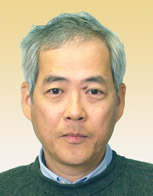
Wednesday, May 1st, 2013
CSL 422- 1:00pm
Abstract
The 2011 March disaster in Japan occurred on the edge between the known and the unknown. That means earthquake and tsunamis of unknown magnitude hit the area prepared for those of known magnitude. Knowledge on extreme natural hazards may derive from experience, history, and geology but incomplete. Confidence on the knowledge as well as lack of the knowledge resulted in severe disasters. Northern half of the areas severely damaged by the Tsunami, the Sanriku rocky coast area was the best-in-the-world prepared for huge tsunamis reflecting experiences in 1896, 1933, and 1960 tsunamis. But there was no historic and geologic information on tsunamis that might have exceeded recent ones and there was no preparation for the unknown. The coastal plains in south, Sendai and Ishinomaki areas were rather poorly prepared only for a few meter high tsunamis like in 1896 or 1978. In these areas, there were few pieces of historic information on much higher tsunamis in 1611 and 869, but they were too few for countermeasures. Since 1990s geologic information on 869 Jogan tsunami has been accumulated by Minoura et al. (2001), Sawai et al. (2007) and Shishikura et al. (2007). They studied surface geology of the coastal lowlands and found tsunami deposits distributed over almost entire lowlands. The 869 tsunami deposits reached 2 to 3 km inside and up to 4 m above present shoreline. Satake et al. (2008) simulated 869 tsunami using the geologic record and proposed two models. One is 100 km long and 100 km wide with 10 m slip, the other is 200 km long and 100 km wide with 7 m slip both offshore Sendai in the middle of 2011 source area. The estimated magnitude is Mw 8.1 to Mw 8.4. The extent of the fault plane is constrained only by the limitation of geologic data. Along the Sanriku coast in north no tsunami deposits of recent tsunamis have been found. In farther south, 869 tsunami deposits were found near Fukushima NPP at 3.6 m above sea level but much higher tsunami run-up was not estimated. Forecasts of earthquakes and tsunamis are inevitably based on our empirical knowledge. In 2011 Tohoku case, there was no knowledge from Tohoku and surrounding areas on M9 earthquake and tsunami. The lack of knowledge set the limit of the forecast, but nobody related to the forecast and hazards had ever informed of the limitation. Communication about the limitation based on the imagination on unknown extreme natural hazards is critical to reduce the risks. Learning from extreme hazards outside Japan, for example from M9 earthquakes in Sumatra 2004 and Cascadia 1700 was under way in 2011 but not in time to prepare for the earthquake and tsunamis.
Koji Okumura is a professor of physical geography at the Graduate School of Letters, Hiroshima University. His research covers a wide area of Quaternary geology and geomorphology related to earthquakes, volcanic eruption, regional tectonics and radiometric ages. His expertise in paleoseismology and active tectonics has significant contribution on long-term earthquake hazard assessment and on nuclear safety in Japan and many other countries. Transfer of research technology to Turkey, Russia, South American countries and India successfully established the foundation of geological studies of earthquake in each country and collaborative research brought important findings. The cooperation with United States scientists since 1990 helps to keep up with the frontier of earthquake science and feed it back to Japan and other countries. The 2007 Kashiwazaki-Kariwa NPP incident put him into the hard task of back-checking all Japanese reactors for seismic safety especially on the ground shaking damage from on-shore and near-shore active faults in the Nuclear Safety Committee. He is currently the Vice President of INQUA (International Union for Quaternary Research) and a member of the science committee of the IAEA International Seismic Safety Center.

